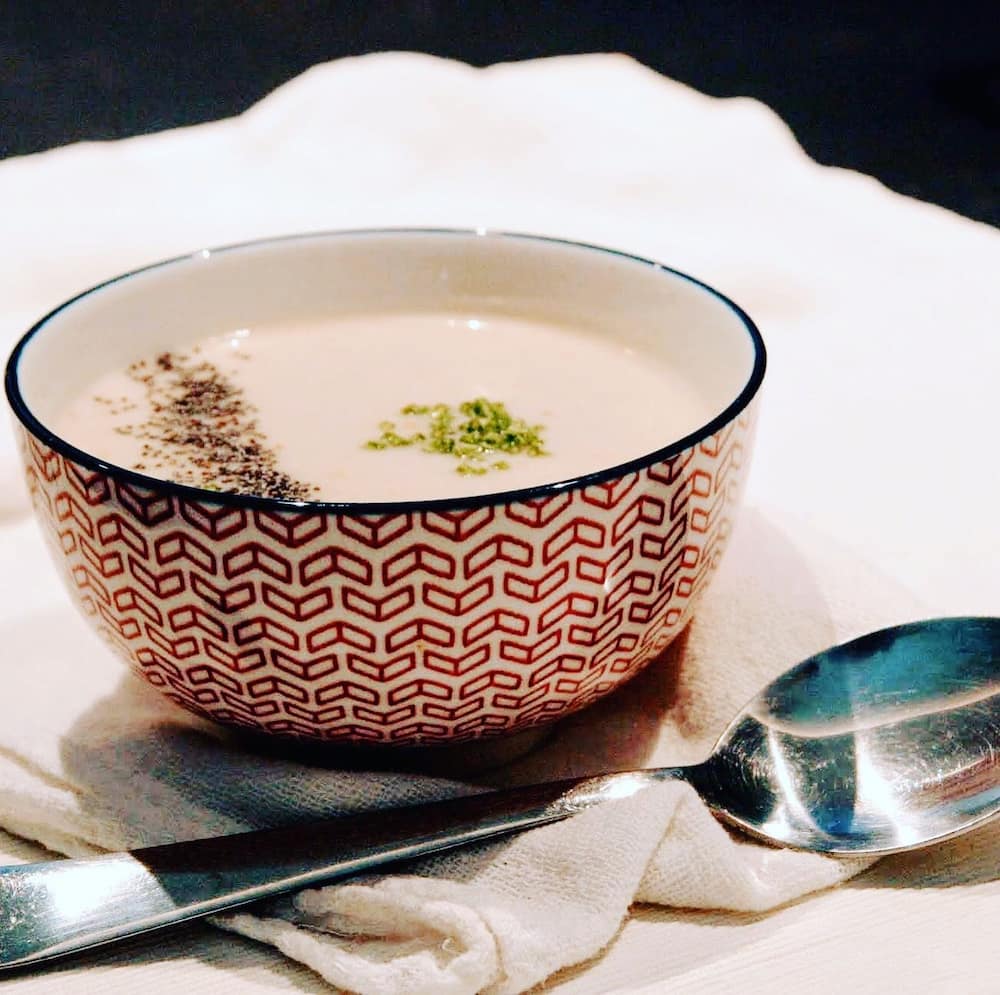Now that autumn is coming but summer still holds, here is a somewhat exotic recipe. George Ohsawa and Aveline Kushi already talked about taro, a very popular tropical crop in the French Polynesia and a natural source of iron and calcium. I have used it to achieve a creamier consistency, since it is very starchy. Plus, it is not a nightshade like potatos.
It can be fried, baked, roasted or steamed, but it must always be cooked, otherwise it can cause gastrointestinal problems.
I have also used coconut milk. Make sure that the coconut milk you buy is always organic and consists only of coconut concentrate and water. Many brands contain a fairly low percentage of coconut and achieve creaminess by adding gums (guar, xanthan, etc.) or carrageenans. It should contain 80% coconut and water. No more ingredients. This is the one I used.
Servings: 2 | Preparation: 5 min. | 25 min cooking | Difficulty: Low
INGREDIENTS
- 1 courgette
- 150 ml of coconut milk
- 1/2 c.c. of caraway seeds
- 2 small taro
- 1 pinch of salt (or to taste)
- 1 c.c. ginger juice
- 1 c.c. umeboshi vinegar
PREPARATION
- Peel the taro (they have a hairy skin, similar to coconuts) and rinse them well under running water. You will see they are starchy. Cut them into thin slices.
- Rinse the zucchini well and remove all the green until you are left only with the white part. You can use the skin strips later as a side if you wish. Dice the courgette.
- Put a pot on the fire, add a little extra virgin olive oil. When the oil is hot, you can add caraway seeds. This enhaces the flavour (but be careful not to burn them).
- Then add the courgette and taro, sauté for a few minutes over medium heat and add the salt. Then cook for 2 more minutes.
- Now you can add coconut milk, just to cover the vegetables. If it is too thick or you want a softer consistency, you can add warm water.
- Rectify flavour with a little more salt if necessary.
- Bring to a boil and then lower to a minimum and cook for about 25 minutes or until the vegetables are soft enough. During this time some liquid will evaporate, so you will have to add more water at the end.
- When the vegetables are soft add more water if necessary and correct by adding more salt or umeboshi vinegar.
- Finally add a few fresh ginger juice drops (optional). You should be looking at nice white cream. You can decorate it to your taste, with some poppy, sunflower, pumpkin seeds, etc., and a little finely chopped parsley.
NOTES: Umeboshi vinegar is a natural flavour enhancer. Actually, it is not vinegar as such, since it is the liquid resulting from the fermentation process of the umeboshi, so it is salty and acid.
Ginger boosts digestion and blood circulation.
Enjoy!







